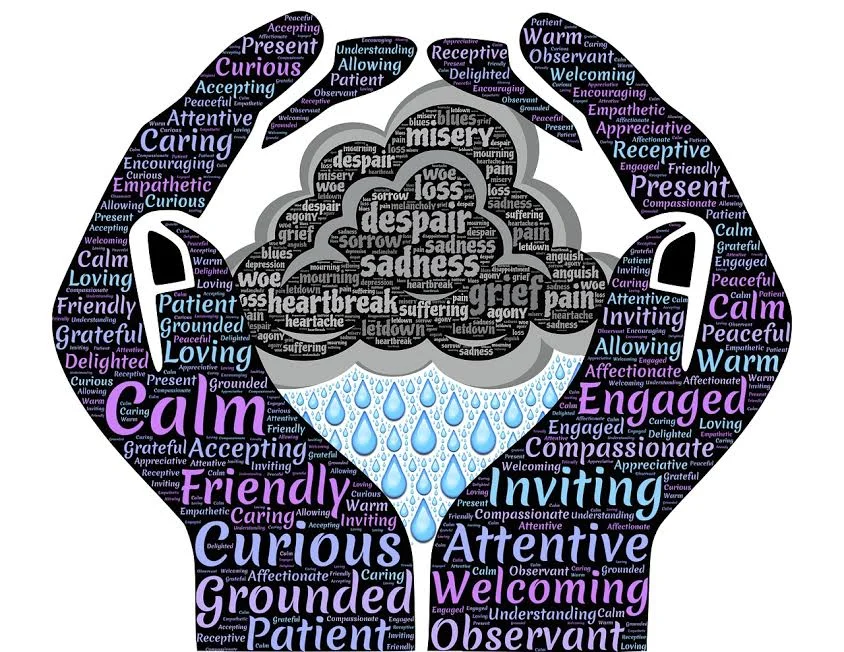It has been almost a year since my last blog post. The reason for my hiatus is that I became a mom last April, and trying to set aside time to write has been a challenge. Writing is important to me, but it has also been difficult balancing my new list of priorities.
So I thought this would be a perfect opportunity to talk about the importance of finding our emotional balance and how to tend to it as our lives naturally change.
Skills to Help You Cope Through Loss
Coping through loss. Not a very fun sounding newsletter, is it? But I think it’s an important and meaningful topic, and I hope this issue of the newsletter will help some of you. In recent months I have heard a lot about loss in my practice. Losing of loved ones, ending relationships, leaving college life and feeling shaky about what comes next, and moving on from friends and familiar places. Loss comes in all different forms, but it’s always difficult. How the heck are we supposed to get through it?!
Regardless of what type of loss it is, emotions can overtake us and try to control what we do or don’t do. Disappointment, shock, depression, anger—they all call out to us in times of loss. And while these emotions are important to pay attention to, it is also important to pay attention to what we need to move through this pain we feel.
There are two skills that I have found particularly helpful in times of loss, and that I recommend you try too.
1). Set aside about 20 minutes (you can even set a timer if you want) and gather what you need to help you just be with whatever feelings arise. Get the aloe tissues ready, a glass of water to stay hydrated, a pillow to hug, or even stuffed animals (we won’t judge).
Remember to be kind to yourself as you feel all those emotions. And after that time limit, make sure you have something planned that helps you feel grounded. It could be watching something on Netflix, seeing a friend, taking a hot shower or bath, or listening to music you find soothing. Whatever it is, tend to yourself.
2). Structure can be your best friend in times of pain and loss. The last thing we need is to be on the couch in a dark room all day. (You can do that if you want, but refer to option 1 for some guidelines.) So give yourself some structure. Get out your weekly planner. If you don’t have one, make one. Look at your week and add in your work, school, family, and any other commitments you have to take care of. Then fill in the gaps. When do you want to see friends? When do you want to be alone and cry or journal? When do you want to watch TV or read that book you’ve been meaning to? When do you want to go for a walk or run?
Scheduling yourself will create a structure that can help you move through emotions thoughtfully, kindly, and with built-in support. Of course, you can always move things around—nothing is ever set in stone. But knowing you have things to look forward to is so important. It’s part of being kind to yourself in a time of loss.
Going through a loss of any kind is a process. Emotions are important, and we need to create space to feel them so we can create space to heal. I hope you find these two methods of creating that space as helpful as I have.
Wishing you all good things.
Angela
Emotional Spring Cleaning
When you think of spring, you often think of shedding the old and bringing in the new. But that doesn’t have to mean just throwing out those old sweaters to make room for new ones. You can apply the same idea to the emotional clutter you collect and hold on to.
Just like unused clothes in a closet, emotions can take up room you can’t spare in your brain. That’s because you unintentionally hoard emotions like guilt, shame, sadness, and anxiety.
But what purpose does this collection of unfortunate emotions serve? None!
It's time to clean out that closet, weed that garden, take out the trash … you get the idea. It might not be as easy to throw out emotional clutter as it is to donate that ratty old sweater, but it can be done with a little patience and kindness.
Below are three steps to guide you through your emotional spring cleaning.
1. Emotional Sorting
Take those emotions off your mental shelf and look at them one by one. Do you need this emotion right now? Do you enjoy wearing it? If not, toss it into the trash. If you want to hold on to it, ask yourself why you want to keep it and for how long. I find these questions can help separate us from our thoughts and emotions, and help us answer honestly.
If you need some distance, I encourage you to ask these questions out loud. Talking it out can help! When you decide which thoughts and emotions are taking up too much space, you can take the next step in letting them go.
2. Journal
Put those thoughts from the trash pile onto a page. No judgment, no editing (swear words included), no holding back. Writing these thoughts down helps free your mind of any ruminative thinking. After you finish writing it all down, you can choose to keep it, shred it, or throw it out. Throwing out the physical evidence of those emotions can be particularly cathartic for many people.
3. Make a Self-Care List
Practice being kind to yourself. To loosen the grip of negative thoughts and emotions, and fully let go, you also need to put good things into your life. Go to the movies, read a book for fun, go for a walk, or do something you love on your own or with a friend. Make a list of activities that make you happy and pick something from it at least once a week.
Remember that these steps may need to be repeated several times before you feel the full effect of
letting go. Do not give up!
It is hard cleaning out old stuff, even when you desperately want to kick it to the curb. This is especially true of emotions. Be patient with yourself. You can always spend some extra time on Step 3 if you feel stuck.
Sending good energy your way!



